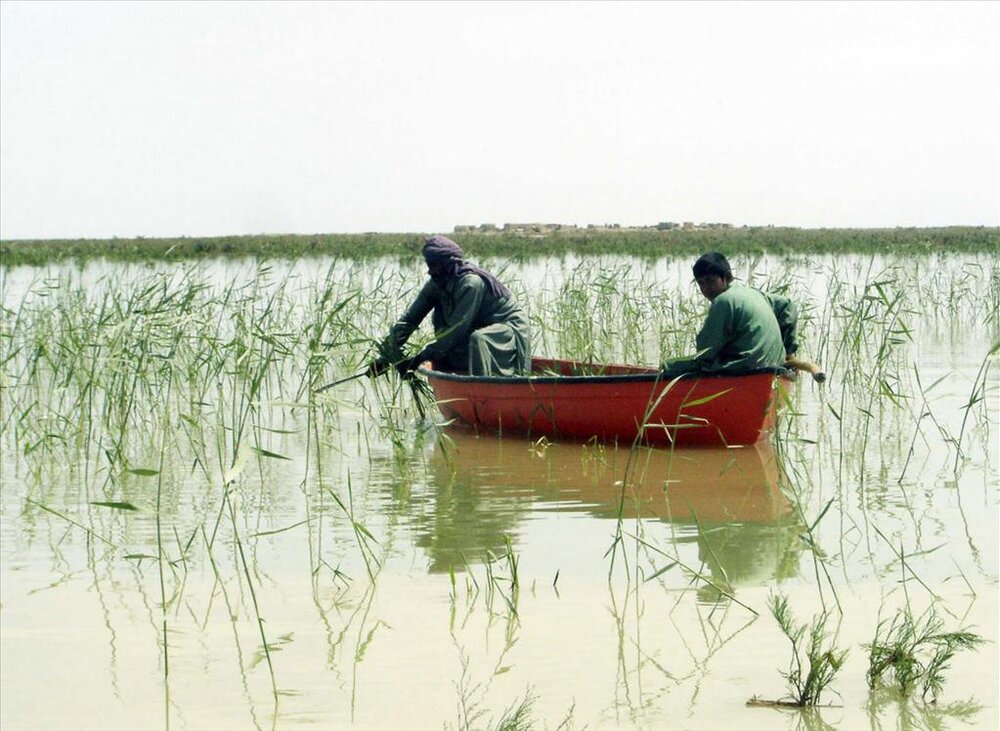COP14 to focus on Hamoun wetlands

TEHRAN – The 14th Meeting of the Conference of the Contracting Parties (COP14), scheduled to be held on November 5 to 13, will address wetland issues, especially Hamouns.
The Hamouns are transboundary wetlands on the Iran-Afghan border made up of three lakes: Hamoun-e Helmand, which is entirely in Iran, Hamoun-e Sabari on the border, and Hamoun-e Puzak, almost entirely inside Afghanistan. The three lakes are linked and fed by water from the Helmand River which starts in the Hindu Kush Mountains in Afghanistan.
The wetlands once supported broad plant and animal diversity and was the main source of the region’s economic viability. But they have nearly dried up due to climate change, dam construction, and other poor water management practices. This has led to large population migrations and a high unemployment rate.
The meeting is an opportunity to present Iran's achievements regarding wetlands and exchange opinions with other countries in the field of protection, management, and restoration of these valuable and vulnerable ecosystems.
The wetlands have nearly dried up due to climate change, dam construction, and other poor water management practices.The opening ceremony and the high-level segment will be in a hybrid modality with the participation of invited representatives both in Wuhan at the East Lake International Conference Center (ELICC) and at the International Conference Centre Geneva (CICG) linked via video. Negotiations and all other aspects of COP14 will take place in Geneva.
Iran, as the starting point of the Ramsar Convention, has planned an active presence and numerous programs for this summit, including the review of issues related to wetlands with a special focus on Hamoun.
Holding an exhibition of the achievements of Iran's wetlands protection plans, participating in the certification ceremony of the two international wetland cities of Varzaneh and Bandar Khamir, as well as the diplomatic follow-up of Iran's candidacy in the Standing Committee of the Ramsar Convention are other programs to be held on the sidelines of the event.
One of the most important proposals of Iran is in line with the resolution of China to set up an international mangrove center in this country, according to which, while supporting this resolution, Iran proposes to set up a research and monitoring center for mangrove forests in the Persian Gulf with the aim of evaluating changes in the extent and the density of mangrove forests and the support of ecosystem services and cooperative conservation. This center is able to manage mangrove forests in West Asia.
The Meeting of the Conference of the Contracting Parties is held every three years, but the 14th meeting had a four-year break from the 13th meeting due to the global spread of Covid-19.
The Convention on Wetlands is an intergovernmental treaty that provides the framework for the conservation and wise use of wetlands and their resources.
The Convention was adopted in the Iranian city of Ramsar in 1971 and came into force in 1975. Since then, almost 90% of UN member states, from all the world’s geographic regions, have acceded to becoming “Contracting Parties”.
Now 172 countries are members of this convention and 2,455 wetlands have been registered as Ramsar sites, of which 25 wetlands of international importance are located in Iran.
Hamoun International Wetland
Hamoun International Wetland is not in good condition, unfortunately considering that the neighboring country has not granted the water rights of the Wetland, head of the Department of Environment (DOE) Ali Salajeqeh said in September 2022, expressing hope to follow up on the issue soon.
In the Sistan region, an international plan is being implemented that pursues the issue of empowering the local wetland communities, which we hope will improve livelihoods in a favorable manner, he noted.
The issue of moisturizing the soil is one of the main ways to solve sand and dust storms in Sistan, which can be done by providing the water rights of wetlands, he also said.
“We should also take advantage of watershed and aquifer projects in the catchment area overlooking the Sistan region to solve the dust phenomenon,” he stated.
FB/MG
Leave a Comment